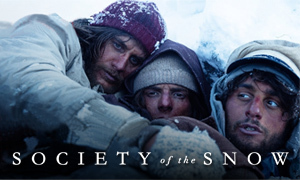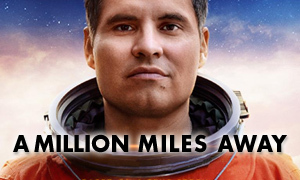First Man: History vs. Hollywood
| REEL FACE: | REAL FACE: |
Ryan Gosling
Born: November 12, 1980 Birthplace: London, Ontario, Canada | Neil Armstrong
Born: August 5, 1930 Birthplace: Wapakoneta, Ohio, USA Death: August 25, 2012, Cincinnati, Ohio, USA (complications from bypass surgery) |
Claire Foy
Born: April 16, 1984 Birthplace: Stockport, England, UK | Janet Armstrong
Born: March 23, 1934 Birthplace: Cook, Illinois, USA |
Corey Stoll
Born: March 14, 1976 Birthplace: New York City, New York, USA | Buzz Aldrin
Born: January 20, 1930 Birthplace: Glen Ridge, New Jersey, USA |
Pablo Schreiber
Born: April 26, 1978 Birthplace: Ymir, British Columbia, Canada | Jim Lovell
Born: March 25, 1928 Birthplace: Cleveland, Ohio, USA |
Kyle Chandler
Born: September 17, 1965 Birthplace: Buffalo, New York, USA | Deke Slayton
Born: March 1, 1924 Birthplace: Sparta, Wisconsin, USA Death: June 13, 1993, League City, Texas, USA (malignant brain tumor) |
Patrick Fugit
Born: October 27, 1982 Birthplace: Salt Lake City, Utah, USA | Elliot See
Born: July 23, 1927 Birthplace: Dallas, Texas, USA Death: February 28, 1966, St. Louis, Missouri, USA (NASA trainer jet crash) |
Jason Clarke
Born: July 17, 1969 Birthplace: Winton, Queensland, Australia | Ed White
Born: November 14, 1930 Birthplace: San Antonio, Texas, USA Death: January 27, 1967, Cape Kennedy, Florida, USA (command module fire during pre-flight testing) |
Shea Whigham
Born: January 5, 1969 Birthplace: Tallahassee, Florida, USA | Gus Grissom
Born: April 3, 1926 Birthplace: Mitchell, Indiana, USA Death: January 27, 1967, Cape Kennedy, Florida, USA (command module fire during pre-flight testing) |
Cory Michael Smith
Born: November 14, 1986 Birthplace: Columbus, Ohio, USA | Roger Chaffee
Born: February 15, 1935 Birthplace: Grand Rapids, Michigan, USA Death: January 27, 1967, Cape Kennedy, Florida, USA (command module fire during pre-flight testing) |
Lukas Haas
Born: April 16, 1976 Birthplace: West Hollywood, California, USA | Mike Collins
Born: October 31, 1930 Birthplace: Rome, Italy |
Christopher Abbott
Born: February 1986 Birthplace: Greenwich, Connecticut, USA | Dave Scott
Born: June 6, 1932 Birthplace: San Antonio, Texas, USA |
Ethan Embry
Born: June 13, 1978 Birthplace: Huntington Beach, California, USA | Pete Conrad
Born: June 2, 1930 Birthplace: Philadelphia, Pennsylvania, USA Death: July 8, 1999, Ojai, California, USA (motorcycle accident) |
How much of Neil Armstrong's life does the First Man movie cover?
The biopic covers the period of Neil Armstrong's life from 1961 up to the Apollo 11 Moon landing on July 20, 1969. On that day, Armstrong became the first person to set foot on the lunar surface. He was joined by Buzz Aldrin approximately 20 minutes later. This can be seen in the Apollo 11 Moon Landing Video.
Was astronaut Neil Armstrong really an introverted and quiet hero like he's portrayed to be in the movie?
Yes. The First Man true story reveals that unlike many astronauts, Neil Armstrong was not the hotshot type, nor was he a fame-seeker. He was a man of few words who was driven to accomplish something no other human being had done. Up to his death, he largely remained a bit of an enigma.
Is the First Man movie based on a Neil Armstrong book?
Yes. The movie is based on author James R. Hansen's New York Times bestselling biography First Man: The Life of Neil A. Armstrong. First published in 2005, the book is the only official biography of Armstrong. It chronicles his involvement in the space program, concluding with the climactic Apollo 11 mission. At the same time, it explores his personal life as well. Armstrong gave his full support to Hansen and encouraged others to provide any necessary information that the author requested. Film rights to the book were sold in 2003, prior to its publication, but a Neil Armstrong movie took years to get off the ground. Initially, Clint Eastwood had been attached to direct.
Was Ryan Gosling the first choice for the role of Neil Armstrong?
Yes. Director Damien Chazelle told People Magazine that the first time he ever met Ryan Gosling was to pitch him the role in the Neil Armstrong biopic. This was before the director and actor teamed up to make the 2016 musical La La Land together.
Is the movie's opening scene, in which Neil Armstrong pilots an X-15 rocket plane into the stratosphere, depicted accurately?
For the most part, yes. He indeed had trouble returning to Earth as the plane began to bounce off the atmosphere instead of slicing back into it. Armstrong was more than 20 miles above the Earth. The only part of that scene that isn't as realistic is when we're able to look out the window of his plane and see the white clouds just below. At 120,000 feet, he was roughly double the altitude of the highest clouds, so realistically, the clouds would have been much further beneath him. -TIME
Is the song playing when Neil and Janet dance in the living room based on an actual song that they listened to?
Yes. The eerie space melody that Neil and Janet dance to in the biopic is an actual song that they listened to. “It was a track that Neil and Janet shared with each other and that Neil wound up bringing with him on the Apollo 11 mission," says director Damien Chazelle. "It’s called 'Lunar Rhapsody'. It's quite appropriate, but it's this sort of weird Theremin orchestral track from the early days of the Theremin [an electric instrument with metal antennas].” -People.com
Did Neil Armstrong really lose a daughter to brain cancer?
Yes. On January 28, 1962, Neil and Janet lost their two-year-old daughter Karen to a case of pneumonia while suffering from a malignant brain tumor. "I thought the best thing for me to do in that situation was to continue with my work," said Armstrong, "keep things as normal as I could, and try as hard as I could not to have it affect my ability to do useful things." He became an astronaut that same year. The movie seems to depict this time in Armstrong's life rather accurately. -First Man Book Interview
Did Neil Armstrong's home really catch on fire?
Yes. Though the scene was cut from the final version of the movie, the First Man true story confirms that the Armstrongs' Houston home caught fire in the spring of 1964. Janet woke in the middle of the night and smelled smoke, at which time she alerted Neil. Astronaut Ed White (portrayed by Jason Clarke in the movie) was their neighbor at the time and jumped the fence to help. The Armstrongs nearly lost their lives. Neil passed their ten-month-old son Mark through a window to Ed. He then went to save his six-year-old son Rick, holding a wet cloth over Rick's face as they made it outside to the backyard. Neil described the 25 feet to Rick's bedroom as "the longest journey I ever made in my life." Rick was okay except for a burn on his thumb.
Did Neil Armstrong almost die while training for the lunar landing?
Yes. Two Lunar Landing Research Vehicles were built. Each used a single jet engine turned right-side up to simulate the Moon's one-sixth gravity of Earth. On May 6, 1968, Neil Armstrong was piloting one of the vehicles roughly 100 feet above the ground. Unanticipated depletion of helium used to pressurize the fuel tanks led to a total failure of his flight controls and the LLRV started to go into a roll. He ejected and parachuted safely to the ground. Future analysis concluded that if he had ejected just half a second later, his parachute would not have deployed in time. His brush with death can be seen in the Neil Armstrong LLRV Training Crash Video. The top image below shows Neil Armstrong floating to the ground after Lunar Landing Research Vehicle 1 exploded into a ball of flames upon hitting the field. -First Man book
Did astronaut Neil Armstrong injure his face during the Lunar Lander training accident like in the movie?
No, he did not injure his face when he was forced to eject from the Lunar Landing Research Vehicle and parachute to the ground. The worst that happened was that he bit his tongue hard during his impact with the ground.
Did Neil Armstrong really have a serious talk with his kids about the possibility of him not returning from the mission?
Yes. Armstrong's sons, Rick and Mark, told USA Today that their father indeed talked with them before going to space and walking on the moon. "That scene came from us," Rick said. He and his brother collaborated with director Damien Chazelle for two-and-a-half years. As for the specifics of the conversation, Mark says he was too young to remember, but Rick says that the movie gets the gist of it right. However, he never remembers directly asking his father, "Do you think you're coming back?"
"I didn't have any doubt that he was coming back," says Rick, who was 12 at the time. "So I wouldn't have asked that." -Collider
"We think we're coming back, but there is some risk," is basically what Armstrong told his sons. With regard to the oldest son shaking his father's hand at the end of the conversation, that was added by the filmmakers. Rick said that it could have happened, or maybe it was a hug. He wasn't sure.
Were Neil and Buzz really running low on fuel as they approached the moon's surface?
As Neil Armstrong and Buzz Aldrin descended to the moon's surface in the Lunar Lander, they believed that they were running low on fuel because the computers were telling that to mission control, indicating that they had less than a minute to either touch down or abort the mission. The nail-biting sequence is true. However, they later learned that the lander hadn't actually been low on fuel.
"You got a bunch of guys about to turn blue. We're breathing again. Thanks a lot," flight controller Charlie Duke radioed to Armstrong after the successful landing. -The Wrap
Does the lunar footprint in the famous photo belong to Neil Armstrong?
No. The famous photo of the lunar footprint that is often shown with Armstrong's iconic quote, "That's one small step for man, one giant leap for mankind," is actually Buzz Aldrin's footprint, not Neil Armstrong's. Therefore, it's not the footprint of the first step taken on the Moon, which we see in the movie. Aldrin made the bootprint in the photo as part of an experiment to test the properties of the lunar regolith (the loose rock and dust sitting on top of the lunar bedrock).
Why aren't there any good photos of Neil Armstrong on the Moon?
As we explored the First Man true story, we quickly discovered that there are no good photos of Neil Armstrong on the Moon. The best image is displayed below. It was taken by fellow astronaut Buzz Aldrin and shows Armstrong removing equipment from storage in the Lunar Module. The reason for the lack of photos of Armstrong on the lunar surface is because most of the time it was Armstrong who was carrying the camera. Some people blamed Aldrin for the insufficient number of photos of Armstrong, reasoning that he wanted the limelight since Armstrong was first to step onto the moon. Aldrin later addressed the criticism, saying he felt horrible that there were so few photos of Armstrong but there was too much going on at the time to realize it.
The most iconic shot of an astronaut on the Moon is of Buzz Aldrin standing and posing for the camera. If you look closely at that photo, you can actually see Armstrong taking the picture in the visor's reflection.
Did Neil Armstrong really leave his daughter Karen's bracelet on the moon?
No. It is here that the movie perhaps takes one of its biggest liberties. There is no historical record that Armstrong left a bracelet of his daughter's on the moon (in the film, he drops it into Little West Crater). Astronauts flew with a PPK (personal preference kit), which included any non-regulation or sentimental items that they wanted to bring with them. Armstrong said that he lost the manifest for his PPK, so we can't be sure what all it contained. We do know that he took with him remnants of fabric and the propeller from the Wright Brothers plane in which they took the first powered flight in 1903. Since Karen's death is believed to have set the course of Armstrong's life (especially at NASA), it's not hard to imagine him bringing a sentimental item of Karen's like the bracelet to the moon. We just don't know for certain if he did, and if so, what he brought. -TIME
How much time did Neil Armstrong spend walking on the Moon?
Armstrong's Moon walk lasted 2 and 3/4 hours, even though it feels much shorter in the movie. Astronauts on the five subsequent NASA missions that landed men on the Moon were given progressively longer periods of time to explore the lunar surface, with Apollo 17 astronauts spending 22 hours on EVA (Extravehicular Activity). The reason Armstrong and Buzz Aldrin didn't get to spend more time outside the Lunar Module is that there were uncertainties as to how well the spacesuits would hold up to the extremely high temperatures on the lunar surface. -Space.com
Did Neil Armstrong and his wife Janet stay together?
No. After 38 years of marriage, Neil Armstrong's wife Janet divorced him on April 12, 1994 after a long separation. He had begun a relationship with Carol Held Knight, a widow who he had met at a golf tournament in 1992. Armstrong married Knight, who was 15 years his junior, on June 12, 1994, exactly two months after his divorce became final.
Apollo 11 Moon Landing Footage & Related Videos
Below, you can further explore the true story behind the Neil Armstrong biopic First Man by watching actual footage of the 1969 Apollo 11 Moon landing, including witnessing Armstrong take the first steps on the surface of the Moon. You can also view footage of his ejection from the Lunar Landing Research Vehicle (LLRV) and its subsequent crash, which happened more than a year prior to landing on the Moon.







